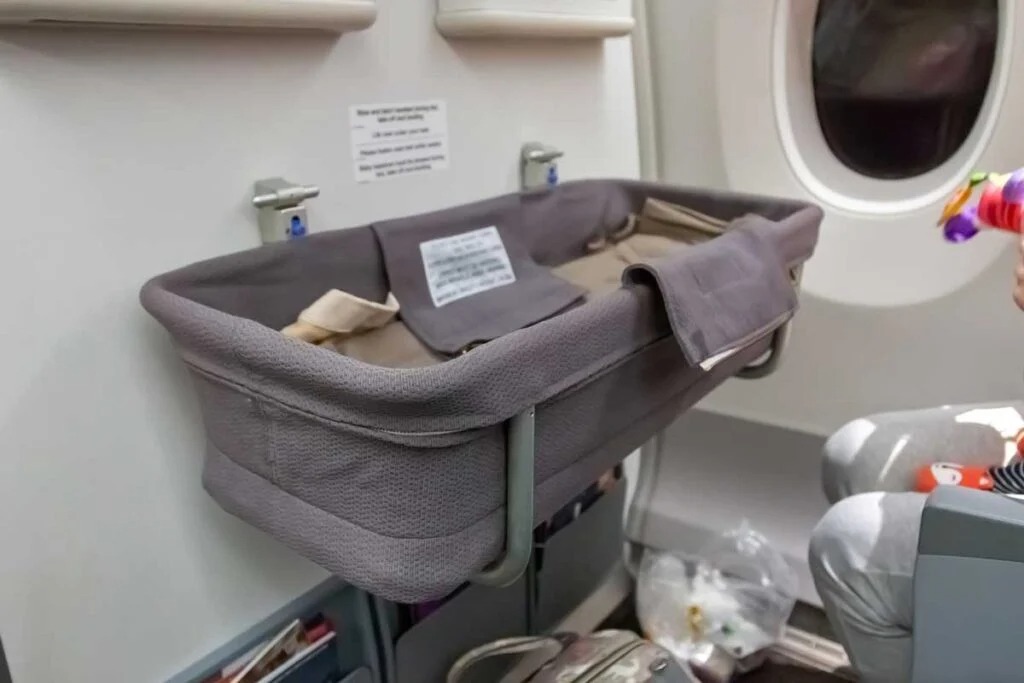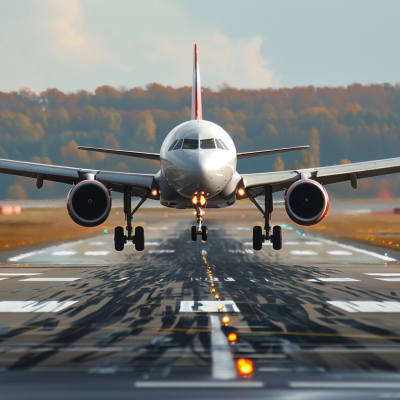When flying, selecting the right seat can make a big difference in your comfort and overall experience.
If you’re considering a bulkhead seat, you might be wondering about the advantages and drawbacks.
Bulkhead seats, located directly behind the dividing walls between cabins, often come with extra legroom but also have some limitations.
In this article, we’ll explore the pros and cons of choosing a bulkhead seat on a plane, helping you make an informed decision for your next flight.
We’ll cover legroom, storage space, and proximity to lavatories and galleys. By the end of this post, you’ll clearly understand whether a bulkhead seat is the right choice for you, ensuring a more comfortable and enjoyable journey.
Understanding Bulkhead Seats
Bulkhead seats are located directly behind physical barriers, such as walls, partitions, or curtains, within an aircraft.
These barriers separate different sections of the plane, including other classes (like first class and economy) or functional areas like galleys and lavatories.
Purpose of Bulkhead Seats

These seats serve various purposes, such as providing extra legroom for increased passenger comfort, accommodating specific needs like infant bassinets, and helping to organize the plane by separating cabin classes or functional areas.
Placement and Variability
Bulkhead seats can be found in various locations across different aircraft:
- They are often at the front of each cabin section, allowing quicker boarding and deplaning.
- Larger planes may have multiple bulkhead rows, separating classes (like first from business or business from economy) or functional areas within the same class.
- The experience of a bulkhead seat can differ greatly depending on the aircraft type and airline, with some offering more space and privacy than others.
Benefits of Opting for Bulkhead Seats
1. Increased Legroom and Spatial Benefits

One of the most noticeable benefits of bulkhead seats is the extra legroom.
With no seats directly in front, passengers have more space to stretch their legs, which can be especially appreciated on longer flights.
This extra space also allows for specific amenities, such as bassinet hooks for parents flying with infants, which add convenience and enhance comfort for young families.
2. Convenience and Access Improvements
The seat layout in bulkhead rows often allows for easier access to the aisle, making it less difficult for passengers to get up, move around, or exit their seats without disturbing others.
As these seats are usually positioned near the aircraft’s entry/exit points, passengers can experience faster boarding and deplaning processes, which can be a significant advantage for those who prefer less time spent waiting in lines.
3. Minimized Seat Recline Interference
Another benefit of bulkhead seats is having no seatback reclining into the passenger’s space.
This is especially beneficial for passengers who need to use laptops or other devices and prefer a stable, unobstructed workspace during their flight.
4. Preferential Service Opportunities
Due to the proximity to the galley or main service areas, passengers in bulkhead seats often receive meal and beverage service before others.
This can mean better choices in meal options and quicker service overall.
5. Enhanced Sleep Quality
The physical barrier of a bulkhead can help block out cabin light and reduce noise from the rest of the cabin, providing a darker, quieter environment that is better for sleeping, especially on long-haul flights.
With no seat recline from the front, passenger movement is less disturbed, which can further improve the quality of rest during the flight.
Drawbacks of Bulkhead Seats
1. Restrictions on Personal Item Storage
One basic logistical issue with bulkhead seats is the lack of under-seat storage, which means all carry-on luggage must be placed in overhead bins during takeoff and landing.
This can be inconvenient for passengers who prefer to have personal items easily accessible throughout the flight.
2. Limitations in Comfort and Entertainment
The design constraints of bulkhead seats can affect comfort.
As these seats lack a seat in front, tray tables and entertainment systems are often integrated into the armrests, which can be less ergonomic and potentially uncomfortable.
This can also reduce the overall seat width, impacting passenger comfort.
3. Exposure to Frequent Disturbances
Bulkhead seats are often located near high-traffic areas such as galleys and lavatories.
This proximity can lead to increased disturbances from noise and people moving around, which can be particularly bothersome during rest periods or on long-haul flights.
4. Seat Experience Variability
The comfort and convenience offered by bulkhead seats can vary greatly depending on the airline and the specific aircraft model.
Different configurations may lead to significantly different experiences, with some offering ample space and others providing a cramped environment.
5. Additional Costs for Premium Seating
Bulkhead seats are often considered premium seating, which can involve additional costs.
This can make them less accessible for budget-conscious travelers or those who do not see the value in paying extra for the benefits these seats might offer.
6. Compulsory Baggage Stowage
It is important to note that all bags must be stored in overhead bins during critical flight phases such as takeoff and landing.
While necessary for safety, this policy can limit the accessibility of personal items when needed most, such as for medications, devices, or in-flight entertainment.
Considerations for Choosing a Bulkhead Seat
- Aircraft Type: The type of aircraft affects the experience of bulkhead seats. Larger planes may have multiple bulkhead locations, each with different characteristics. Smaller planes might have a single bulkhead section, often near louder areas like the galley or lavatory.
- Flight Duration: When selecting a bulkhead seat, consider the flight’s duration. For long-haul flights, the benefits of extra legroom might outweigh the downsides, like noise and limited storage. For shorter trips, the inconvenience might not be worth the premium.
- Personal Comfort Preferences: Think about your personal needs and comfort preferences. For instance, the lack of under-seat storage might be a dealbreaker if you need frequent access to your belongings. Others might prioritize extra legroom or faster boarding and deplaning.
How to Choose a Bulkhead Seat: Use of Airline Seat Maps
When booking your flight, use the airline seat maps to identify which seats are designated as bulkheads.
These maps show the cabin’s layout, allowing you to see where bulkhead seats are located relative to other features like galleys and lavatories.
Conclusion
In conclusion, choosing a bulkhead seat on a plane can significantly impact your flying experience.
You can make an informed decision that best suits your needs by weighing the pros and cons, such as extra legroom and easier aisle access against limited storage and potential noise.
When selecting a bulkhead seat, consider the aircraft type, flight duration, and your personal comfort preferences.
Utilize resources like airline seat maps and SeatGuru to identify and reserve the best bulkhead seat for your journey.
Remember, early booking and direct communication with the airline can help ensure you secure the seat that meets your specific requirements.
By taking the time to consider your options carefully, you can enhance your overall flying experience and arrive at your destination feeling refreshed and ready for your next adventure.







0 Comment